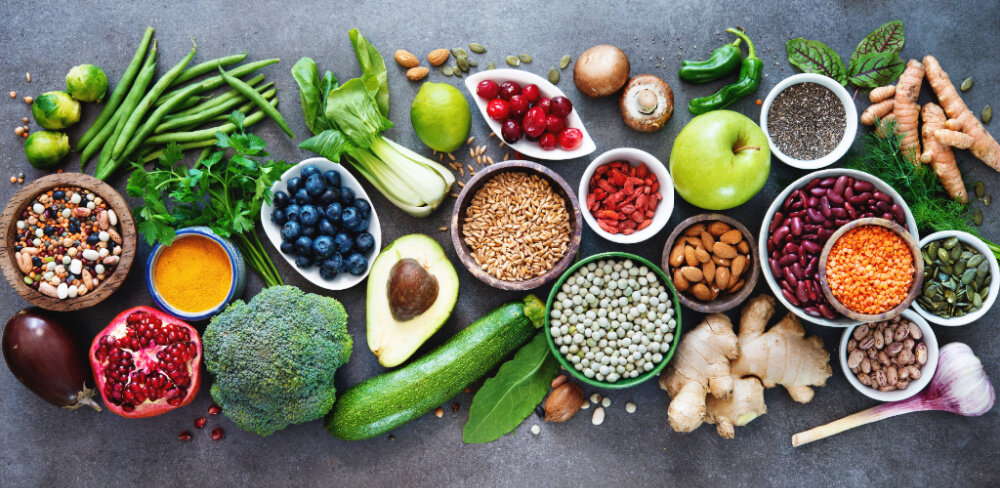I have fond memories of Halloween.
I loved dressing up and spending the entire evening outside, running from house to house, taking in all the decorations, and visiting with the other kids and the families in our community. I have many great memories of the houses that went full out, with haunting music, the parents dressed up, black lights and ghoulish decor, it all felt like a spectacle that you were a guest at and a witness to.
I don’t have that many memory associations with the candy. I remember eating candy and liking certain ones and not others, I enjoyed trading candies with friends and siblings, but I also remember feeling sick from it.
As an adult, who has had Cancer and studied Nutrition for over a decade now, I struggle deeply with Halloween. I am all for the dress up, the fun for kids, the decorations, the community connection, the door-to-door nighttime adventures, and the opportunity to experience a little time in an alternate world where all you need to do is be in character and enjoy the moment! BUT I struggle to understand why this fun-filled experience needs to include incredible amounts of toxins. Essentially, the kids go door-to-door and each house dumps some poisonous chemicals into their treat bag, offering some verbal connection and a wish for a fun night, and then the kids are left to manage an overwhelming amount of candy, decipher potential rules with parents, and otherwise consume all, if not a good portion, of it’s toxic chemical overload with little to no education as to what it actually contains.
It’s weird.
Most kids have not yet developed their own regulation with food, which is why, as parents, it is our role to teach them. Left to their own devices, most kids would opt for processed food, white bread and/or pasta, refined carbohydrate foods that are satisfying to the palate, feel safe or easy, and provide a temporary glucose boost for the blood sugar. Although kids come with some intuitive tendencies, most need your guidance to develop mind-body awareness around food and an understanding of the role food plays for the body and how to make good food choices. This is why handing a child an enormous bag of candy is simply a disservice to them, is often cause for conflict within the home, and is counterintuitive to educating kids well about food choice.
I fail to understand how the candy aspects of Halloween have any positive effects at all (maybe it’s just me?).
That being said, this is the way of society and some things we simply do not have the power to change in entirety. So instead, maybe some of us can make better choices for our kids and our friends & neighbours’ kids, and offer some candy alternatives that are less damaging and can provide a little real-food variety amongst a sea of non-food chemicals.
Since I have had a child (now 13 years), I have only ever handed out real food alternatives or better food choices for Halloween. It hasn’t been perfect, some years I’ve opted for organic, packaged chocolate or granola bars, and in recent years, I’ve added organic, cane sugar lollipops, but I’ve tried hard to mostly provide bags of popcorn and homemade cookies and, for the most part, the kids are stoked (and so are the parents!). I have a few neighbours who also hand out homemade treats and, because we live in a small town where everyone knows everyone, this is appreciated and not feared. I have a friend who has always left a bowl of apples at her door and gone out and about for Halloween with the kids and, every year without fail, when she comes home from the evening’s adventures, the apples are gone.
Here’s the point: the kids are, for the most part, happy about whatever goes in their bag because, for them, it is VERY much about the experience of Halloween, not truly, deeply, about the candy at all. Sure, the older the kids get, the more focused they are on the treats, noticing when they are handed an entire can of pop or a regular sized chocolate bar, but if they were handed something else, it wouldn’t change the experience of Halloween, and that is very telling.
Why then, can we not be handing out less damaging foods, paying closer attention to the ingredients in the packaged thing we are buying, and putting a little effort into making Halloween more about the experience than about the candy?
A Few Scary Facts About Food Additives:
Three of the most common additives in well-known types of candy are titanium dioxide, tertiary butylhydroquinone, or TBHQ, and butylated hydroxytoluene, or BHT. This ghoulish trio has repeatedly been linked to a wide range of potential health harms.
Titanium dioxide gives some types of candy their smooth texture and bright color. It’s used in Skittles, Starburst, Sour Patch Kids, Swedish Fish and Trolli gummies.
Scientists have warned for years about the potential health risks of titanium dioxide because it can accumulate in the body and lead to DNA damage and hormone disruption. Earlier this year, the European Food Safety Authority assessed the additive as being unsafe for consumption.
TBHQ is a food preservative that prolongs the shelf life of candies and snacks such as Reese’s, Pop-Tarts, Cheez-Its and more than a thousand other processed foods. TBHQ can harm the immune system, according to an EWG study published this year in the International Journal of Environmental Research and Public Health.
Other studies have shown how the additive can impair flu vaccine efficacy and raise the risk of food allergies. The Food and Drug Administration approved the use of TBHQ years ago and has not reevaluated it in light of new science that raises questions about its safety.
BHT, used in Rice Krispies Treats and Charms Blow Pops, has been listed by the FDA as generally recognized as safe. But some studies have shown it can cause cancer in animals and may act as an endocrine disruptor.
Chloe Olsen, EWG Communications Intern
https://www.ewg.org/news-insights/news/2021/10/scariest-thing-about-halloween-may-be-whats-lurking-candy
Unfortunately, I could spend an entire blog (or write a book) on the dangers and detrimental health effects of food additives, but this time around, I’d like to focus on some solid ideas to help us do something productive instead!
Alternative Ideas to Halloween Candy
WHOLE FRUIT: Fresh apples, tangerines, or other fruit with peels, if you could find mini bananas, those would be perfect. There is nothing wrong with giving out fresh, delicious, real food fruit, nope, nothing.
DRIED FRUIT/NUT MIX: I’ve never met a kiddo that doesn’t love dried mango! You could easily buy some dried fruit in bulk, bag it yourself, and hand that out as a delicious, sweet treat. A nut mix would also work well for this!
POPCORN: My personal favourite, the kids seem to love a simple bag of salted popcorn in and amongst all the sweet food intake. We use coconut oil and himalayan sea salt and although it’s a bit of an operation to get it all popped and bagged, it’s worth it every time!
ORGANIC, HIGH QUALITY CHOCOLATE: Depending on what is available to you, you might be able to find some individually wrapped high quality organic chocolate. Kids love chocolate and deserve to reap the benefits from real cacao without the additives of processed sugar and preservatives.
COOKIES/GRANOLA BARS/BAKED TREATS: If you feel comfortable where you live, this is a wonderful contribution to Halloween. Making cookies, mini pies or butter tarts, chocolates or homemade granola bars, is a lovely way to show that you care about the kids and feel it’s worth the effort to treat them with real food goodies. Need ideas? Find them here 😊
BETTER CHOICE PACKAGED FOOD: If you are just too busy to put in any extra time, there are plenty of options out there that offer a better quality or choice as far as packaged food goes. Opting for some mini granola bars, fruit gummies, or organic, cane sugar lollipops, still counts and is still a step in the right direction 😉
NON-FOOD TREATS: Sometimes this is not as appreciated by the older kids, but stickers, erasers, mini notepads or markers, all make a great “treats” that kids can enjoy for a longer time period than something consumable. You could even have a bowl of these for the younger kids and something different for the older ones.
Lastly, REMEMBER THIS: Anything you can do to help is something and counts. So, do what you can. The more of us onboard with making a move towards real food at Halloween and on all the days and special occasions, the more this approach and enthusiasm spreads!
Thanks for being here! Happy Halloween! 🎃








